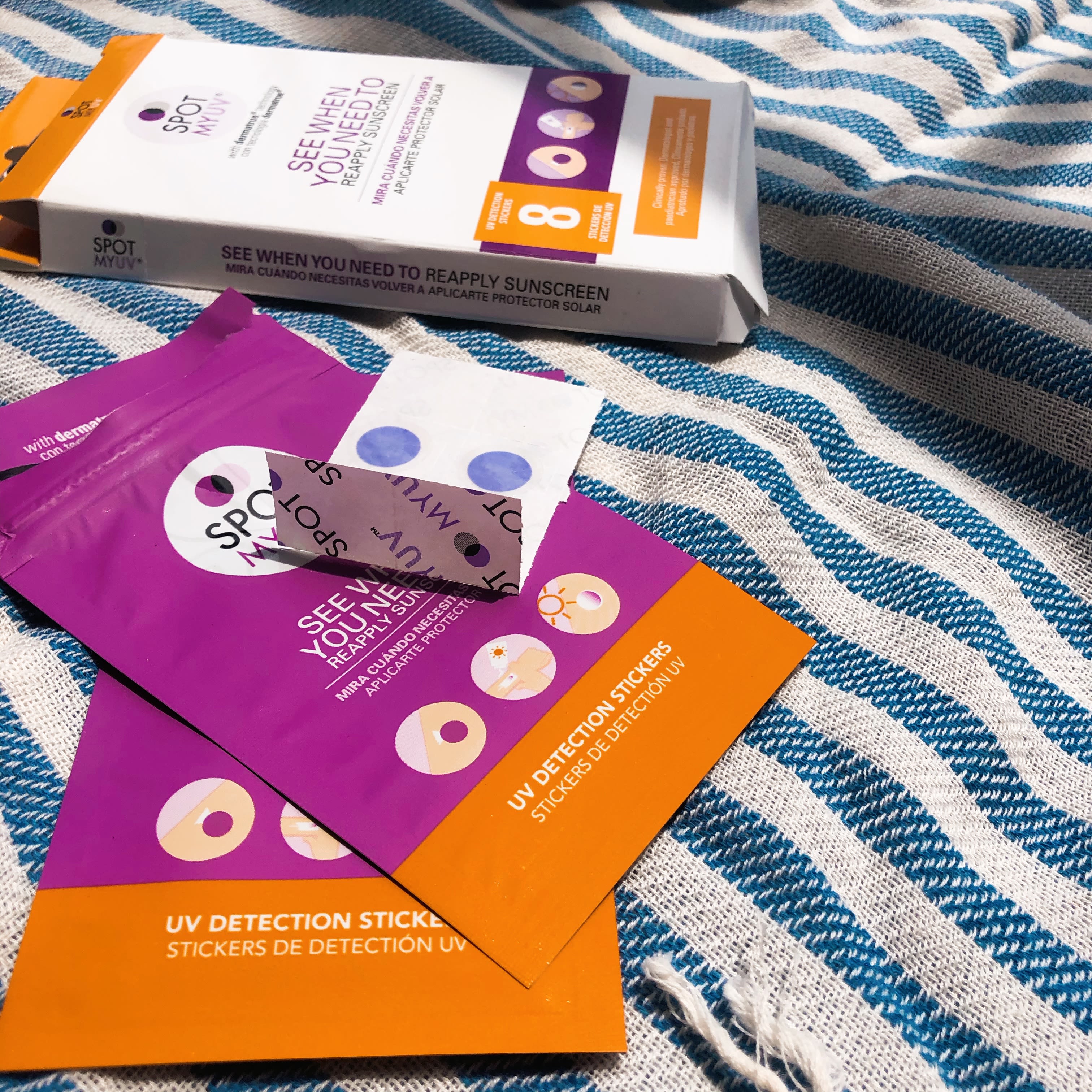Unlike lipstick, or cleanser, or lotion, the stakes with sunscreen application are pretty high. If you're not protected from UV rays, you're edging towards a run with skin cancer in a worst case scenario. The best case, sped up aging and money down the drain, isn’t exactly a sunny proposition either. That being said, it’s really hard to know when you’re fully protected. You’ve probably read the statistics: most people apply only 25 to 50-percent of the recommended amount of sunscreen, and when put to the test, many sunscreens don’t live up to the level of sun protection they claim. (Most recently and notably this happened with Purito’s beloved Green Level sunscreen, but it’s always been an issue among sunscreen manufacturers—in 2016, Consumer Reports tested 60 sunscreens and found that nearly half fell short of their promised SPF. It was the fifth year in a row they found similar results.)
Knowing all of that, if you could take out an $8 insurance plan on your sunscreen application, would you?
I came across SpotmyUV through an Instagram ad. Picture a sticker the size of a pimple patch, but flimsier, dark purple, and built by nanotech engineers. It’s made up of three unique layers, where the bottom is a swim and sweat-proof adhesive. In the middle you have a disc of UV-sensitive ink, which looks purple when it’s activated by UV rays and clear when not. And then on top is a patented biopolymer the brand calls DermaTrue, which absorbs and wears sunscreen just like skin does. You stick a purple dot onto your skin, apply your sunscreen like you normally would, and wait for it to turn clear, indicating that the UV ink is protected and your skin is too. If you don’t apply enough it’ll stay purple, and as your sunscreen wears off during the day it’ll slowly turn back to purple. The premise was compelling! And in addition to being derm-approved, the tech itself has won over 50 awards.
Even though SpotmyUV usually shows the purple dots on people’s arms in promotional materials, I knew I wanted to test them on my face. In theory, it would only be a visible purple dot for a minute—once I applied enough sunscreen, the color would disappear and the sticker should blend in undetectably. I also wanted to test them indoors, since that’s where I live these days. A representative for the brand noted that some windows have a protective coating that blocks UV light, but if my stickers turned purple indoors I’d know mine don’t. I started with clean skin, and when I stuck my sticker on my cheek there was no edge lifting or slip-and-sliding. Then I squeezed out two fingers-length squirts of a mineral SPF 50 sunscreen and applied all over like I normally did. Aforementioned two fingers crossed.
After that I kind of forgot about the sticker for an hour. (Oops.) But when I passed a mirror and caught a glimpse at my cheek… the sticker was a sheer lavender, indicating that I was only “partially protected.” Two fingers length worth of SPF 50 still wasn’t enough to block just the UV getting through my crappy, clearly unprotected windows! I added two more fingers-worth, and when I went back to check two minutes later it was finally clear. Another day, when I repeated the process with a lower SPF mineral sunscreen (35 instead of 50) I had in my medicine cabinet, a whopping six fingers of sunscreen left the sticker still somewhat purple. I'd assumed such a bulky layer of SPF would give me armored car level protection. But the results were in: that was a lie. On a third day, when I tested a beloved SPF 40 chemical sunscreen, I gave up before I could get it to go clear. The brand noted that because of differences in the method of penetration, chemical sunscreens might take a bit longer to affect the sticker… but three thick applications and three snack breaks later, I still had the Barney pox. That was some expensive goop.
The good news: once I did have the right amount of sunscreen on, the sticker stayed clear all day. (Which tells me that one good application in the morning is totally fine for WFH or lazy Sundays at home.) When it was sunny and I was outside, the dot predictably turned purple faster, indicating when I needed to reapply to avoid a burn. And how to account for the days I couldn’t get it to go clear? The brand says that could be because the sunscreen was past its expiry date (which is three years since you bought it, unless stated otherwise on the packaging). Or, I might need to be using a higher SPF based on the UV index of wherever I am. In New Zealand for example, the brand rep tells me, the minimum SPF that’ll protect the stickers is SPF 75. My SPF 30 moisturizing beauty sunscreen wouldn’t cut it.
I could run this test a million times, and I will every time I try out a new sunscreen. But the fact of the matter is there are too many variables for me to tell you the sunscreen you should use and how much you should apply of it. If you want to know for sure, buy the patches and run your own experiment. They’re at every CVS and a pack of six costs less than 10 bucks. Then all you have to do is apply and wait, and you’ll know for sure. Your sunscreen bottles? They’re shaking.
—Ali Oshinsky
Photo via ITG

